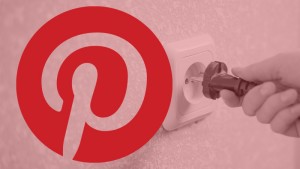— July 17, 2017

rawpixel / Pixabay
Do you have the itch to start your own company? That’s great!
Many entrepreneurs start off by feeling the itch but being unsure about what to sell. If you have a few business ideas you’re tossing around in your head now is the time to evaluate which one you should move forward with.
Today’s post will help you analyze your business ideas and pick the winner. Let’s dive right into the analysis.
Questions to Ask Yourself About a Business Idea
1. What are the profit margins?
Before you place your first order for products from a manufacturer, you first need to do your research. The top thing you need to determine is if you can sell your product at decent profit margins.
To calculate your gross profit margin you’ll want to subtract the cost of goods sold from net sales.
Let’s look at a very simple example: if a product retails at $ 20, but it costs you $ 8 to get it from the manufacturer and then you have to pay $ 5 for shipping the product to the consumer, your cost is $ 13 ($ 8 + $ 5 = $ 13).
You would then subtract the cost to you from the price the consumer pays: $ 20 – $ 13= $ 7.
Your gross profit margin is $ 7. That means for each sale at $ 20 you make $ 7. You have a gross profit margin of 35%.
This is obviously a very simple example and there are usually even more expenses to calculate like the cost of shipping boxes, packaging, marketing spend, etc. You may know be able to forecast all of these expenses before you get started, but you’ll want to account for as many factors as you can to make sure there are good profit margins.
A good profit margin is approximately 25% or better by many market analysts. If your initial calculators show a tighter profit margin, it may be best to look for a different product or a cheaper manufacturer.
Of course, consider that a cheaper manufacturer may mean a lower quality of product. Or you may incur higher sourcing costs if the product has to be shipped to you from an overseas factory in China or elsewhere, and that additional cost will also cut into your profit margins.
You could try raising your retail price to make the numbers more favorable, but you have to consider if you can really sell the product for the higher price. For example, many people will not pay $ 50 for even the most lux toilet paper!
2. What is the competitive landscape like?
After you’ve discovered a product to sell that has high profit margins it’s time to assess the competitive landscape. If you’ve come up with a totally new product or a new use for an existing product there may be no direct competitors.
However, most new companies will have at least one competitor. The majority of the time there will be multiple competitors.
Before diving head first, research the competitive landscape and ask yourself:
- What products do they sell?
- What is their market share?
- What strategies do they use for marketing?
- What type of media do they use to market their products?
- What opportunities do you see for taking market share?
As long as your product improves upon something that already exists, or can be marketed in a way that makes it seem different or better, there is an opportunity to penetrate the industry.
If you have the same exact product with the same exact uses, there may still be an opportunity if you can market your product to a different audience segment or in a different way.
For example, if your competitors are only doing TV advertising or billboards, there may be an opportunity for you to reach a different audience through digital ads.
Having competitors shouldn’t stop you from developing your business idea, but you do need to know how you will win the sale. Spend as much time as you need to on this step to get a true gauge of the competitive landscape.
3. Is there a readily accessible community to market to?
Finally you’ll want to evaluate whether or not there is an obvious community to market to. Many entrepreneurs make the mistake of thinking “my product is for everyone!” That may be true for some products, but it’s still best to narrow in on a niche audience, if possible, and then expand outward.
You’ll want to search Instagram, Twitter, Pinterest, Facebook, blogs and other online communities to see if there are specific places people are going to discuss topics related to your product.
For example, fashion brands may look through the #OOTD (Outfit Of The Day) hashtag on Twitter and Instagram to connect with people who may be interested in their products.
Don’t limit yourself to just digital though.
For example energy drink companies will often go to sporting events to hand out free samples or coupons for their products because those attendees are likely to go on to become customers.
The goal of this step is to find out where your ideal consumer is hanging out (if anywhere).
If you can identify your community, and it’s readily accessible, then you know you have a place to go to begin marketing your product as soon as it’s ready!
Getting Started
Once you’ve carefully thought through the answers to these questions you’ll be ready to begin writing your business plan.
While you may be tempted to skip the business plan writing process it will provide you an outline from which to launch your business. It’s always best to lay a foundation before you start building!
Good luck and if you have any questions leave me a comment below.
Business & Finance Articles on Business 2 Community
(68)






